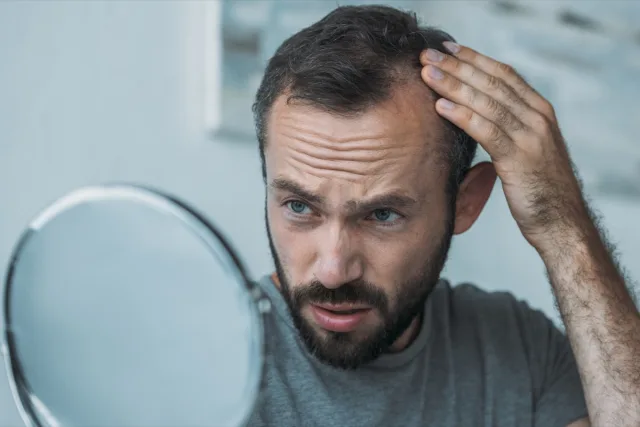Uncategorized
Understanding hair loss: causes, symptoms, and treatment

Hair loss is a common condition that affects millions of people worldwide. While it’s normal to lose some hair every day, excessive hair loss can be a cause for concern. In this article, we’ll discuss the causes, symptoms, and treatment options for hair loss.
Causes of hair loss
There are several possible causes of hair loss, including:
- Genetics: Hereditary hair loss, or androgenetic alopecia, is the most common cause of hair loss in both men and women.
- Hormonal changes: Hormonal changes, such as those that occur during pregnancy, menopause, or thyroid problems, can cause hair loss.
- Medications: Some medications, such as chemotherapy drugs, blood thinners, and antidepressants, can cause hair loss as a side effect.
- Nutritional deficiencies: A lack of certain vitamins and minerals, such as iron and vitamin D, can contribute to hair loss.
- Stress: Physical or emotional stress can cause temporary hair loss.
- Medical conditions: Certain medical conditions, such as alopecia areata and scalp infections, can cause hair loss.
Symptoms of hair loss
The symptoms of hair loss can vary depending on the cause and severity of the condition. Common symptoms include:
- Thinning hair: This is often the first symptom of hair loss. Hair may appear thinner and less dense.
- Receding hairline: Men may notice a receding hairline, while women may notice thinning hair around the part.
- Bald patches: Some people may develop bald patches on the scalp.
- Excessive shedding: Hair may fall out more easily and in larger amounts than usual.
Treatment of Hair Loss
The treatment of hair loss will depend on the cause and severity of the condition. In some cases, hair loss may be temporary and resolve on its own. In other cases, treatment may be necessary to promote hair growth and prevent further hair loss.
Treatment options for hair loss include:
- Medications: There are several medications available to treat hair loss, including minoxidil and finasteride.
- Hair transplant surgery: Hair transplant surgery involves removing small pieces of skin from the scalp and transplanting them to areas of the scalp with hair loss.
- Laser therapy: Low-level laser therapy may help stimulate hair growth and improve the quality of existing hair.
- Lifestyle changes: Making certain lifestyle changes, such as eating a healthy diet, managing stress, and getting regular exercise, may help promote hair growth.
Prevention of Hair Loss
While not all types of hair loss can be prevented, there are several steps you can take to promote healthy hair growth and reduce the risk of hair loss. These include:
- Eating a healthy diet: A balanced diet rich in vitamins and minerals can help promote healthy hair growth.
- Avoiding harsh styling products: Harsh styling products, such as gels and hairsprays, can damage hair and contribute to hair loss.
- Avoiding tight hairstyles: Tight hairstyles, such as braids and ponytails, can cause hair loss over time.
- Managing stress: Stress can contribute to hair loss, so finding ways to manage stress, such as through exercise or meditation, may be helpful.
Hair loss is a common condition that can be caused by a variety of factors. If you’re experiencing hair loss, it’s important to see a healthcare provider for an accurate diagnosis and treatment. By taking steps to promote healthy hair growth and reduce the risk of hair loss, you can help maintain a healthy head of hair.


